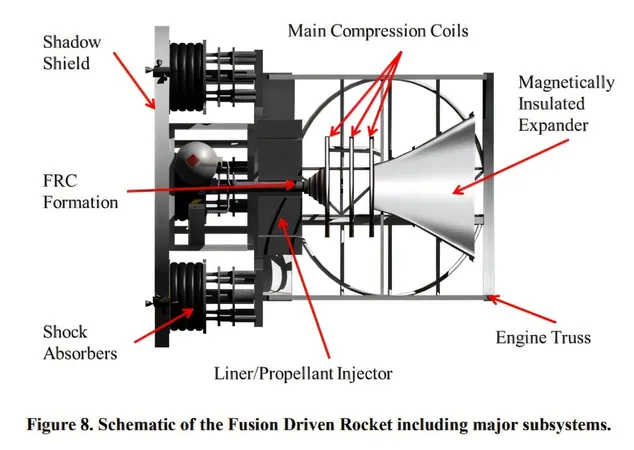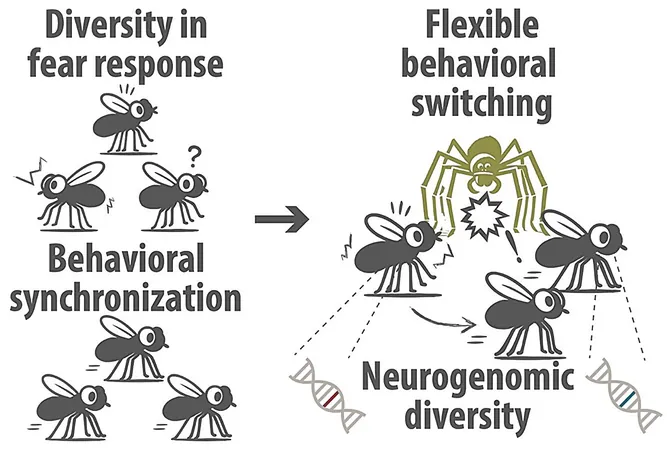
Unlocking Nature's Secrets: Rice University Team Discovers Hidden Rules of Motion with Magnetic Particles
2025-05-19
Author: Jacques
The Dance of Particles: A Microscopic Marvel
Ever marveled at how birds flock in perfect harmony or how ripples ripple through a pond? These mesmerizing behaviors in nature reveal a profound ability to coordinate motion. Now, a groundbreaking discovery by scientists at Rice University showcases a similar phenomenon at the microscopic level, where tiny magnetic particles move in unison along the edges of clusters, propelled by invisible 'edge currents'.
Astonishing Findings in Physics
Published in *Physical Review Research*, this research uncovers a fascinating aspect of topological physics, a field gaining traction from advancements in quantum computing. "When I first saw the data displaying particle streams racing along the edges, I immediately recognized these were edge flows!" remarked Evelyn Tang, the study's lead researcher and assistant professor of physics. "The excitement lies in our ability to explain this behavior through innovative concepts from topological physics."
Riding the Edge Current Wave
In their innovative experiments, the team used superparamagnetic colloids—tiny magnetic beads significantly smaller than a grain of sand—suspended in a saltwater solution. By applying a rotating magnetic field, the particles formed various crystal shapes, including dense clusters and expansive sheets peppered with voids.
What truly captured their attention was how particles at the outer edges began to move faster than those in the center, creating a conveyor-belt-like effect around the shape's perimeter. "This is what we refer to as edge flow," explained Aleksandra Nelson, co-first author and former postdoc in Tang's lab. "It’s essentially a natural current that forms without any external push."
The Magic of Topology
To unravel this mystery, the team looked to topological physics, which studies how physical movement is influenced by a system’s shape rather than its details. Sibani Lisa Biswal, co-author and professor of chemical engineering, aptly described it: "Topology is like traffic signs guiding flow; even amidst roadwork or potholes, traffic continues on its path. Similarly, edge flow remains consistent due to the system's overarching shape."
Dynamic Structures and Controlled Motion
Remarkably, the nature of the particles' motion varied with their formation. In free-floating clusters, the edge flow induced a spinning motion akin to a mini wheel. In contrast, larger sheets with voids exhibited edge movement without rotation. This shift occurred because once confined by surrounding material, particles in sheets spread their motion inward rather than twirling.
Implications for the Future
While this research may appear niche, the implications are vast. Mastering how to govern movement in complex systems could revolutionize fields like responsive materials, targeted drug delivery, and micro-robotic swarms.
Dana Lobmeyer, co-first author and recent graduate, noted, "By leveraging fundamental physical principles, we're edging towards materials that can intuitively interact with their environments—no computers necessary!"
Bridging Science and Nature
The team also sees parallels in biological systems. Many cell clusters rotate during development, suggesting that similar physical rules may govern life itself. "That’s the essence of science," Tang reflected. "We’re connecting mathematical concepts to real-world materials, showcasing the elegance of universal rules at play, even in the lab next door."
Research Support
This groundbreaking work was made possible thanks to grants from the National Science Foundation and The Kavli Foundation.









 Brasil (PT)
Brasil (PT)
 Canada (EN)
Canada (EN)
 Chile (ES)
Chile (ES)
 Česko (CS)
Česko (CS)
 대한민국 (KO)
대한민국 (KO)
 España (ES)
España (ES)
 France (FR)
France (FR)
 Hong Kong (EN)
Hong Kong (EN)
 Italia (IT)
Italia (IT)
 日本 (JA)
日本 (JA)
 Magyarország (HU)
Magyarország (HU)
 Norge (NO)
Norge (NO)
 Polska (PL)
Polska (PL)
 Schweiz (DE)
Schweiz (DE)
 Singapore (EN)
Singapore (EN)
 Sverige (SV)
Sverige (SV)
 Suomi (FI)
Suomi (FI)
 Türkiye (TR)
Türkiye (TR)
 الإمارات العربية المتحدة (AR)
الإمارات العربية المتحدة (AR)